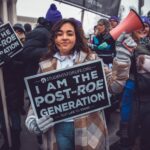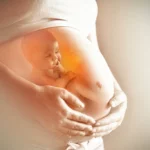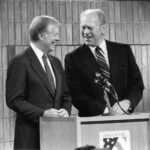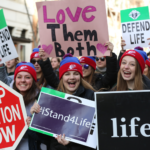Blog Post
How the curse of abortion has haunted America’s literary greats
By Jonathon Van Maren
Nearly a half-century after Roe v. Wade, abortion is still a subject that bitterly divides America. More than sixty million pre-born children have been extinguished, and their demise is still the rawest of subjects for millions of the people who have survived them. Who would these nameless millions have been? What would these murdered multitudes have done, or written, or sung, or discovered? To reflect on this tragedy is to stare with horror into a black abyss of absence where there are no answers, only the echoes of impossible questions. Artists have grappled with it to no avail, and America’s storytellers, too, have been drawn to the blood-soaked quagmire over and over again.
William Faulkner introduced the topic in The Wild Palms. John Updike used abortion to force his characters into agonizing moral dilemmas. Margaret Mitchell’s Scarlett O’Hara in Gone with the Wind wants an abortion after she discovers that she is pregnant with Rhett’s child. Ayn Rand – if she can really be considered a novelist – championed abortion as a “moral right,” while Pearl S. Buck passionately opposed abortion and Walker Percy condemned it in his essay “A View of Abortion with Something to Offend Everybody.” Truman Capote touched on it in his fiction, too, although he surely must have known that his mother Lillie Mae desperately wanted to abort him, and was only prevented from doing so by his father Arch Persons. A subject of such intimacy and violence could scarcely be ignored by those who task themselves with exploring the messiness of human nature.
What is less well-known is the extent to which abortion has scarred the American literary landscape itself, a soundless violence that profoundly impacted the lives of those who often lived with the ghosts of the voiceless children they rejected. These experiences permeated (and permeate) the lives of some of America’s best-known writers. For many, abortion was a necessary evil – one that would permit them the selfishness necessary to live the lives of fame and literary glory that they desperately desired. For others, abortion was the tragic result of their reckless living, the bloody evidence that somebody must always pay when the music stops, the booze is gone, the sex is over, and the skull-splitting hangover arrives.
One shocking example is John Steinbeck, the writer celebrated for his identification with the impoverished and forgotten Americans of the Great Depression in magnificent novels like The Grapes of Wrath, who forced his first wife Carol to have an abortion in 1939. Carol – who had meticulously typed and edited Steinbeck’s early manuscripts – wanted the baby, but Steinbeck felt that fatherhood would interfere with his writing ambitions, and insisted that they dispose of the child. The resulting illegal abortion was botched, Carol suffered a bad infection in her uterine tubes, and a hysterectomy was necessary as a result. Their marriage collapsed shortly thereafter when she discovered that Steinbeck was having an affair, and she never fully recovered from her bitterness over what had happened – especially as Steinbeck went on to have two sons by his second wife, Gwyn. Steinbeck was awarded the Nobel Prize for Literature in 1962. His ambitions had given birth to success.
Upton Sinclair, who won the Pulitzer Prize for Fiction in 1943, has also established a reputation as a man who used his writing to drive much-needed social change, beginning with The Jungle, a novel published in 1906. The Jungle revealed the wretched conditions in the American meatpacking industry and was credited with triggering the public outrage that resulted in the 1906 Pure Food and Drug Act, passed only a few months later. (Abortion was a subject that would also surface in Sinclair’s novels.) A few years before, Sinclair’s wife Meta had become pregnant, and the couple tried unsuccessfully to abort the child in the womb several times before giving up. Their son David was born on December 1, 1901, and later achieved staggering success as a research physicist. Other less fortunate couples would not get to experience the blessing of failure.
F. Scott Fitzgerald, the author of seminal novels such as The Great Gatsby and Tender is the Night, was living in the alcohol-fuelled whirlwind of a literary celebrity in New York City with his wife Zelda when their daughter Frances (known as Scottie) arrived in 1921. The following year, Fitzgerald biographers reveal, Zelda became pregnant again – and this time, opted instead for an illegal abortion. Scott’s thoughts on this are not recorded, but he may have referred to the event once. One scene that was later cut from the first draft of The Beautiful and the Damned involved the main character, Gloria, suspecting she is pregnant – and being urged by her paramour Anthony to “talk to some woman and find out what’s best to be done. Most of them fix it some way.” Fitzgerald’s alcoholism killed him by the age of 44, and by then Zelda had been in and out of mental hospitals for several years. She would die in a hospital fire eight years later at the age of 47.
The story of Sylvia Plath, the poet who wrote The Bell Jar and committed suicide by gassing herself with her oven in 1963, is well-known to nearly all lovers of American literature. Plath killed herself as her marriage to the poet Ted Hughes imploded – his mistress Assia Wevill, as it turned out, had just become pregnant. What is less well-known was revealed years later by Plath’s friend Elizabeth Sigmund, who wrote that several weeks after Plath’s suicide, Hughes took Wevill for an “operation” – an abortion. Two years later, Hughes and Wevill had a little girl, Shura. Four years after that, in March of 1969, Wevill gassed herself and her four-year-old daughter to death in their kitchen after feeding the little girl sleeping pills. She had finally despaired of Hughes ever marrying her, and was afraid that when she was gone, the girl would not be as loved as the two children Ted Hughes had shared with Sylvia Plath.
It was in the Beat Generation of the 1950s, that tragic train-wreck of sex, substance abuse, and selfishness, that abortion culture put down its deepest roots. The so-called Beatniks, including the producer of the pornographic poem Howl, Allen Ginsberg, the author of On the Road, Jack Kerouac, and influential post-modern writer William S. Burroughs, are credited with creating a culture of nonconformity and setting the stage for the Sexual Revolution, which would finally bring abortion from the shadows of illegality to celebration as an essential right. While the men slept with virtually anyone willing, male or female, the women of the Beat Generation were left to deal with the inevitable consequences. One historian puts it bluntly: “In many cases, children were the price Beat women had to pay if they wanted to live lives that were as exciting as Beat men.”
And so it was. Beat author Hettie Jones had an abortion, and Brenda Frazer had two. Elise Cowen, who once dated Ginsberg, found that her baby had grown so large by the time she found a doctor willing to do the procedure that she needed an entire hysterectomy to rid herself of the child. Shortly thereafter she moved back in with her parents, but the abortion tortured her. She killed herself by jumping from her parents’ apartment window to the courtyard below. In her last poem, she wrote simply: “Twenty-seven years is enough.” Poet Donna di Prima was forced into an abortion, and poured her bitterness into a heartrending work titled Brass Furnace Going Out. “I want you in a bottle to send to your father with a long bitter note,” she wrote. “I want him to know I’ll not forgive you, or him, for not being born…”
Jack Kerouac also left a path of carnage behind him during his days on the road, before dying of drink at the age of 47. His lover Edie Parker told him what she’d done some time after she’d had an agonizing kitchen-table abortion when she was four months pregnant with his child, and he raged in response – but Parker said that Kerouac would have been even angrier if she’d kept the baby. She may have been right: Kerouac later demanded that his wife Joan have an abortion, telling her that, “Of course I want children, but not now!” Joan refused, and gave birth on February 16 of 1952 to Kerouac’s only child, a little girl named Janet Michelle who would eventually be known by the nickname Jan.
Or at least, his only surviving child – another of his partners reportedly aborted a little black-haired baby that she thought was Jack’s. Kerouac’s girlfriend Joyce Johnson writes of having an illegal abortion while dating Kerouac, recalling the child being “scraped out of me.” Kerouac, meanwhile, disowned his daughter Jan and the responsibility she represented. “The only people for me,” he wrote in On the Road, “are the mad ones, the ones who are mad to live, mad to talk, mad to be saved, desirous of everything at the same time, the ones who never yawn or say a commonplace thing, but burn, burn, burn like fabulous Roman candles.” And so he did, becoming in many ways a true icon of the Beat Generation and everything it represented: He lived hard, died young, and his children paid the price.
So did the children of other literary greats. Margaret Salinger, the daughter of The Catcher in the Ryeauthor J.D. Salinger, bitterly wrote that her crackpot father once responded to her illness during pregnancy by commenting that she “had no right to bring a child into this lousy world and he hoped I was considering an abortion.” (She wasn’t.) Alice Walker, who won the 1983 Pulitzer Prize for Fiction for The Color Purple, suffered badly from anxiety and depression after having an abortion in 1965, and publicly defends abortion rights to this day. Joan Didion’s biographer Tray Daugherty has suggested that an alleged abortion in her twenties may explain the devastating abortion in her second novel, Play It as It Lays (Didion and her husband later adopted a little girl.) And there are others.
We do not know who those lost and nameless children would have been. We can only catch a few glimpses represented by the dead and the living, like the shattered baby with a little shock of jet-black hair that looked just like Jack Kerouac’s, or David Sinclair, the writer’s son who survived abortion attempts to become a renowned physicist. They are a reminder of the fact that a society which embraces the destruction of children cannot understand what – or rather who – they are throwing away. Their presence among us may be short, but the missing children at times cast long shadows into the lives of those who sacrificed them for more glamorous things – or who forced young mothers to get rid of them, at times triggering such despair that the broken girls chose to follow their children into an early grave.
There are few honest people who will not admit, at least privately, that abortion is a profound tragedy. But sometimes we forget that this tragedy is also a societal tragedy and a cultural tragedy. We forget that each abortion claimed the life of a tiny person, created by two other people. And when we realize that many of those people are the very writers and artists who tell us the story of America, we can begin to realize that the story of the missing millions has become an fundamental part of America’s story – a heartbreaking, bloody story that must be told – and a story that must end.









This is a powerful distillation of research and reading – thanks for putting it together. Haunted is definitely the right word – you can almost hear the scream of a repressed and rejected conscience in these lives. So much death and misery for such fleeting glory.